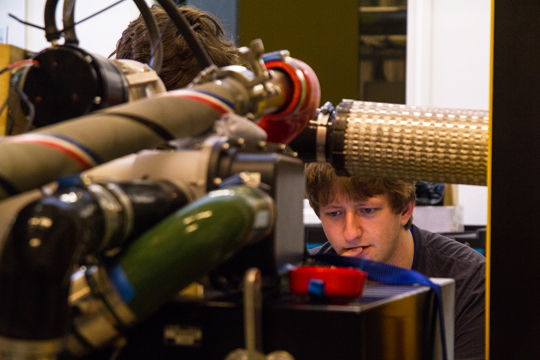The Forze hydrogen racing team is testing their fuel cell stack at a specialised facility in Petten this week. Despite some difficulties, the output power approaches the 100-kilowatt target.
The Forze team has outgrown TU Delft’s test facility with its maximal load of 15 kW. The stack that powers the latest version of the hydrogen car delivers 100 kW of electrical power plus the same amount as heat. Sponsoring enabled the team to perform their tests at the ground of the Petten Research Park at the Joint Research Centre’s Institute for Energy and Transport (JRC-IET). This facility has a grid connection permitting a 100 kW feed-in, which is what the Forze team needs at full power.
Tests on Monday unveiled some software glitches, which were swiftly repaired. Somewhat more serious was the failure of the system’s air pump, which has to match the quantity of hydrogen at climbing power. Instead the pump got stuck, and tests were continued with air flow from the JRC facility.
On Tuesday afternoon Forze team member Matthijs Damen said that 85 kW had been reached and because of the bad luck with the pump, the team has been given until Friday to finish their tests.
Damen is confident that the team will reach the 100 kW target since “no fundamental limitations have been met with.”
The Forze hydrogen car’s (peak) power will be almost double that of the stack, Damen explains. In the race the stack will run at full power, also when approaching a curve. Its excess power will be temporarily stored in supercaps, just as the energy from the brakes. After the curve, this extra energy is fed to the engines doubling the power for the duration of 3 to 5 seconds.
These measures are required to get racing performance from a fuel cell stack that fundamentally performs best at steady loads.



Comments are closed.